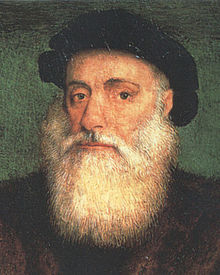This Day in History: August 28, 1499
Additional Date: August 28, 1499
Vasco Da Gama was of noble birth and was the son of an explorer, however little else is known about his early life. Da Gama was said to have been educated in the town of Evora, where he studied navigation and mathematics. In 1497, he set out with a crew of 148 men on the Sao Gabriel, and headed for India. After reaching the coast of Sierra Leone, they sailed south and reached the coast of present day South Africa. Whereas previous explorers, such as Bartholomew Dias, had turned back after making landfall on the southern African coast, Da Gama and his crew sailed further along the east African shoreline. They were the first Europeans to call at the port of Mombasa, but having been met with some hostility, sailed to the friendlier port of Malindi. Da Gama and his crew looted Arab ships on the East African coast and negotiations on arrival in India led to conflict. In August 1498, Da Gama set out to return to Portugal. His crew was severely affected by scurvy and almost half had died when he reached Lisbon on 28 August 1499. Although Da Gama was the first European to navigate a route to India by sea, his voyage did not bring the prestige he had hoped for. The consequences of Da Gama's voyage to India include the development of the spice trade and the Portuguese colonisation of Mozambique. It also created competition between European powers, which resulted in the need for and subsequent development of a half way station in South Africa.
